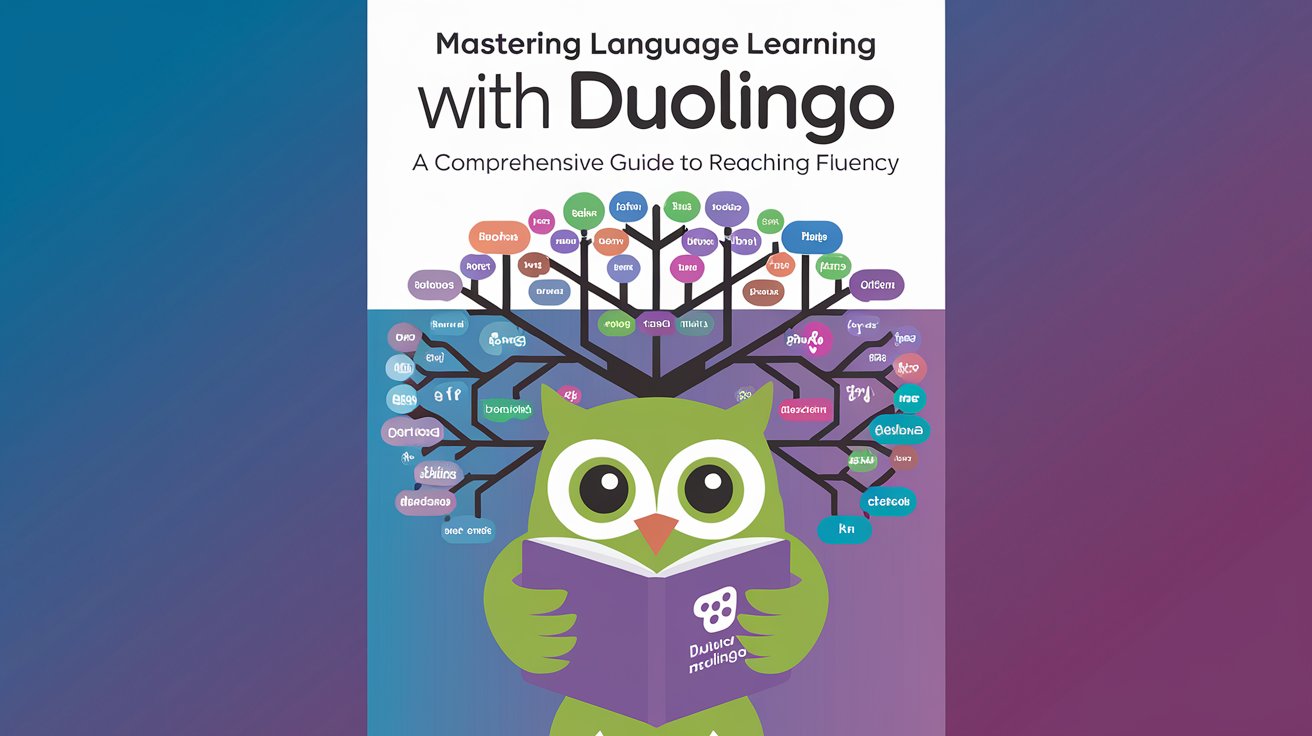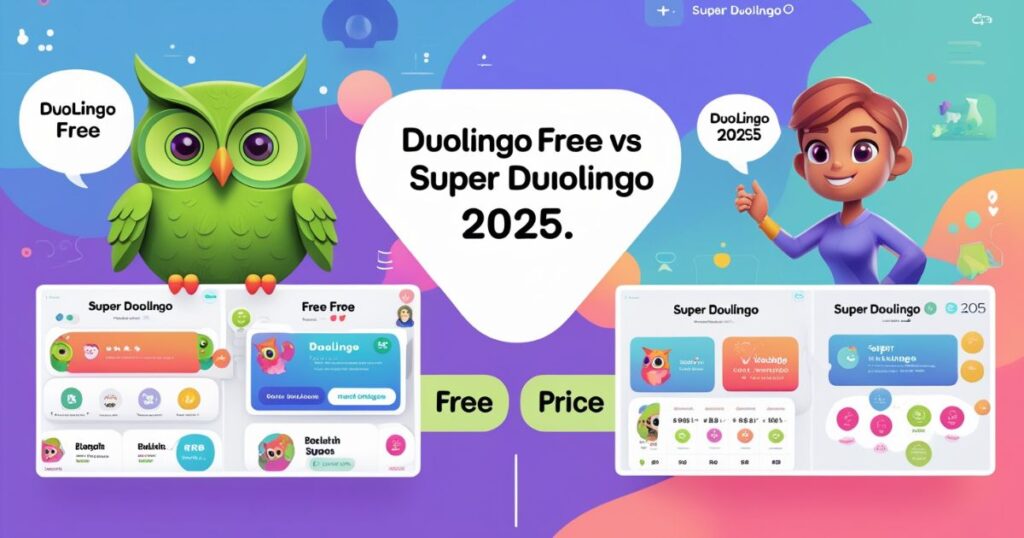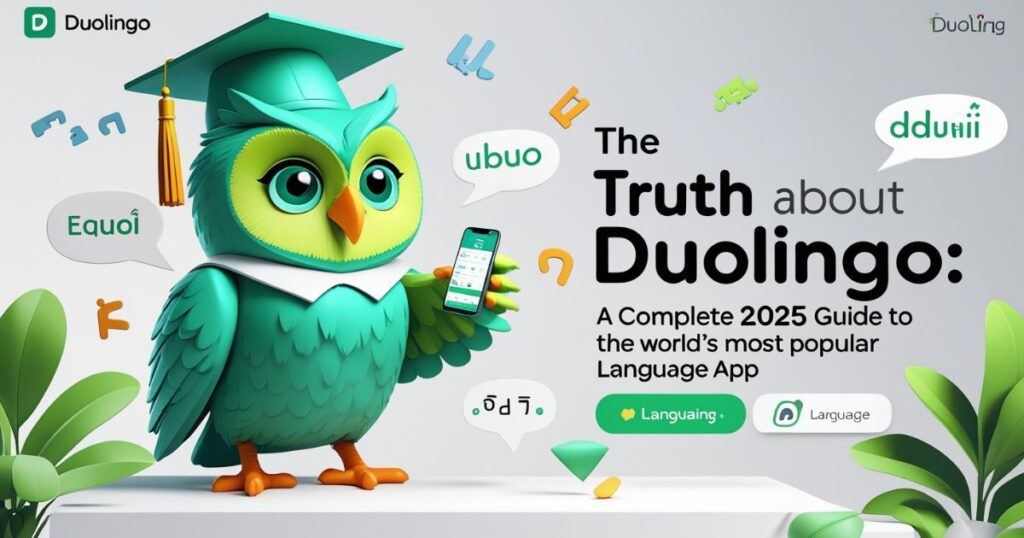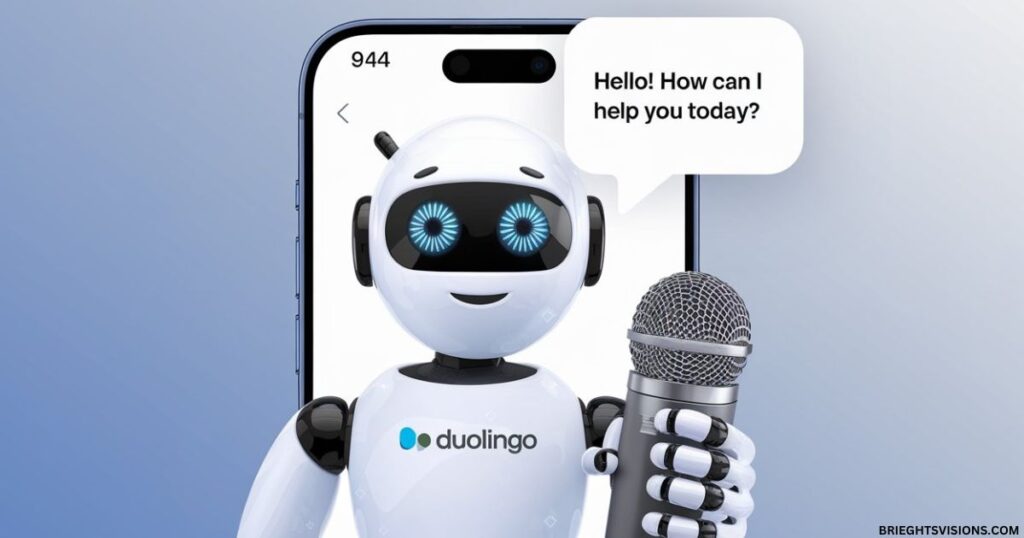Learning a new language can feel overwhelming, but with the right approach and tools, anyone can achieve their language learning goals. Duolingo, the world’s most popular language learning app, offers a powerful foundation for building language fluency. Let’s explore how to transform this gamified app into a serious tool for mastering a new language.
The Science Behind Effective Language Learning
Language Learning with Duolingo transforms the way our brains process new languages. When we immerse ourselves in language acquisition, our neural pathways undergo fascinating changes, creating stronger connections with each practice session.
Scientists have discovered that consistent exposure to language patterns activates multiple brain regions simultaneously, enhancing both comprehension and retention. Through spaced repetition and active recall, Duolingo’s scientifically-backed approach helps learners build lasting language skills.
The app’s algorithm adapts to your learning pace, presenting material at optimal intervals to maximize retention. This method of learning mirrors how children naturally acquire language, making it particularly effective for adult learners who want to develop natural fluency rather than just memorizing phrases.
Understanding Your Brain’s Learning Process
The journey of language mastery through Duolingo relies heavily on understanding how our brains process and retain information. When learning a new language, your brain creates neural networks specific to that language’s patterns and structures.
These networks strengthen through regular practice and meaningful engagement. Just as athletes train their muscles through consistent workouts, language learners must exercise their linguistic skills daily.
The brain’s plasticity allows it to adapt and grow stronger with each learning session, especially when combining different learning modalities like reading, listening, and speaking. Duolingo’s varied exercise types tap into this natural learning process, helping you build robust language skills through multiple channels of engagement.
Strategic Daily Practice in Language Learning with Duolingo

Sustainable learning habits form the bedrock of successful language acquisition through Duolingo. The key to mastering a new language isn’t just about maintaining streaks – it’s about creating a meaningful and consistent practice routine that aligns with your natural rhythm.
By identifying your peak focus hours and scheduling dedicated Duolingo sessions during these times, you’ll maximize your learning potential. This approach to language learning goes beyond simple gamification, emphasizing real progress over virtual achievements.
When you create personalized study goals, you’re not just following the app’s predetermined path but crafting a journey that reflects your unique learning style and practical objectives. Whether you’re aiming to navigate daily conversations or dive into literature in your target language, structuring your learning around these concrete goals makes your practice more purposeful and effective.
Optimizing Your Learning Schedule with Duolingo
Maintaining momentum in your language learning journey requires a delicate balance between challenge and achievement. Setting specific practice times – whether it’s during your morning routine or evening downtime – creates a structured approach to learning that becomes second nature. Think of your learning schedule as a personal appointment with progress. Instead of treating Duolingo sessions as optional activities, integrate them into your daily routine like brushing your teeth or checking emails.
This systematic approach helps develop sustainable learning habits that stick. Consider using time-blocking techniques to protect your learning periods, and experiment with different times of day to find when you’re most receptive to absorbing new language concepts. The goal is to make language practice as natural and automatic as any other essential daily activity.
Core Learning Optimization
Effective Language Learning with Duolingo begins with mastering its core features strategically. The platform offers a rich ecosystem of learning tools that go far beyond simple vocabulary drills. The Stories feature stands out as a powerful tool for language immersion, combining natural dialogue with contextual learning.
What makes Duolingo truly effective is its multi-modal approach to language acquisition. Through interactive exercises, audio lessons, and speaking practices, learners engage with the language in various ways. The platform’s genius lies in how it breaks down complex language patterns into digestible chunks while maintaining the challenge level.
For optimal results, users should focus on mastering each level before advancing, ensuring a solid foundation in grammar and vocabulary. The combination of visual, auditory, and interactive elements creates a comprehensive learning environment that caters to different learning styles.
Making the Most of Interactive Features
The journey of Language Learning with Duolingo becomes more effective when you understand how to leverage its interactive features. The crown system serves as a sophisticated progress tracking mechanism, helping learners gauge their proficiency in specific skills.
Each crown level introduces new challenges and complexity, ensuring gradual skill development. The XP system isn’t just about gamification – it’s designed to encourage regular practice and reward consistent effort.
By focusing on achieving mastery at each level, rather than rushing through lessons, learners develop a deeper understanding of the language. This methodical approach helps build confidence and ensures that new concepts are thoroughly internalized before moving forward.
Beyond Basic Features
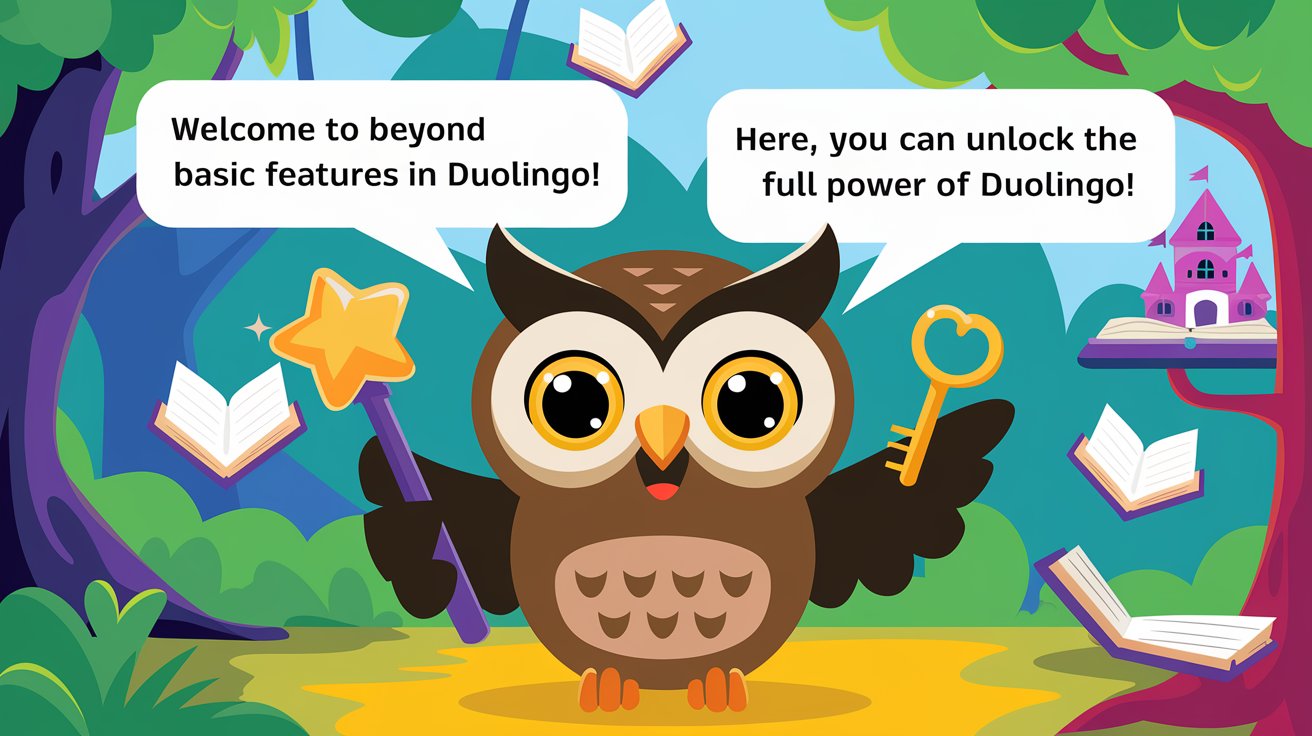
Language Learning with Duolingo transforms into a powerful tool when you venture beyond its basic features. The platform offers sophisticated learning mechanisms that many users overlook in their quest for language mastery.
The forums serve as vibrant communities where learners exchange valuable insights and learning strategies, creating a collaborative environment for growth. The Unit Guidebooks stand out as comprehensive resources, offering detailed explanations of grammar patterns and contextual vocabulary usage.
When combined with the practice hub’s targeted exercises, these advanced features create a robust learning ecosystem. Regular engagement with challenging content, strategic use of spaced repetition, and consistent practice sessions help develop stronger language skills.
Advanced Learning Strategies
Maximizing your language learning journey requires a strategic approach to supplementary tools. While Duolingo provides an excellent foundation, incorporating complementary resources like Anki for spaced repetition and Memrise for enhanced vocabulary building can significantly accelerate your progress.
These tools offer unique features that complement Duolingo’s methodology, creating a comprehensive learning experience. For instance, Anki’s sophisticated algorithm helps reinforce challenging concepts, while Memrise’s mnemonic techniques make vocabulary retention more engaging.
Real-World Integration & Practical Application
Language Learning with Duolingo becomes truly effective when integrated into daily life through practical application and real-world exposure. The journey to fluency extends beyond app-based lessons through active cultural immersion – whether it’s enjoying Netflix shows in your target language, exploring foreign podcasts, or engaging with native content on social media.
Platforms like Tandem and HelloTalk offer invaluable opportunities for authentic language exchange, providing real conversation practice with native speakers. Transform your environment into a learning space by labeling household items, switching your device settings to your target language, or maintaining a daily journal.
These practical strategies create an immersive experience that reinforces your Duolingo lessons and accelerates progress toward genuine fluency. The combination of structured app learning and real-world practice creates a comprehensive approach to language mastery.
Measuring Progress and Success
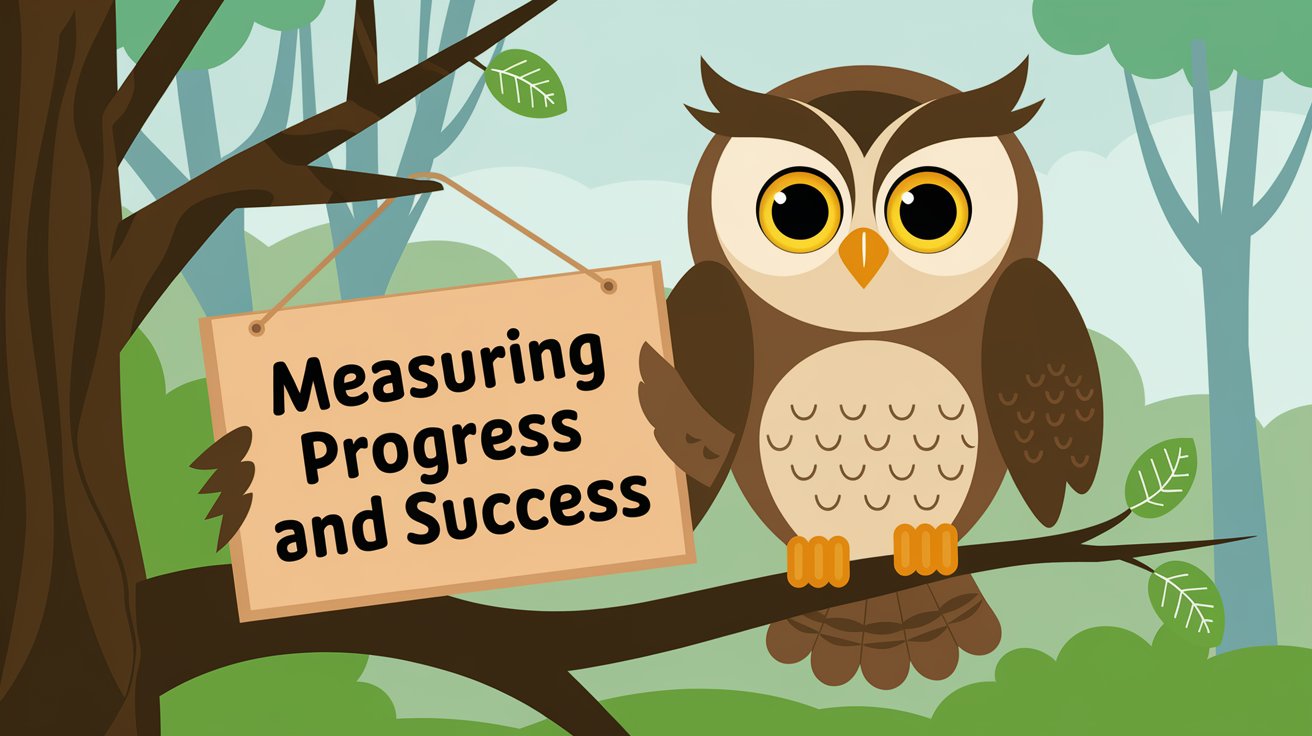
Effective Language Learning with Duolingo requires looking beyond traditional metrics and gamified rewards. While XP points and streaks can motivate, true progress manifests in real-world achievements.
Setting concrete milestones, like successfully ordering food in your target language or understanding a native speaker’s conversation, provides more meaningful benchmarks for your language mastery. The journey involves strategic progress tracking through personal achievements rather than just digital rewards. Consider keeping a language journal to document your improvements, from mastering complex grammar patterns to understanding cultural nuances.
Regular self-assessment helps identify areas needing attention while celebrating genuine progress. Remember to adjust your learning strategy based on these real-world outcomes, ensuring your language learning journey remains both effective and purposeful.
Setting Realistic Expectations
Language Learning with Duolingo requires understanding achievable timelines for proficiency. Most learners reach intermediate level in 6-12 months through consistent practice, though individual progress varies significantly. Key factors influencing learning speed include:
- Daily study commitment (15-30 minutes minimum)
- Prior exposure to language learning
- Linguistic similarity to your native tongue
- Regular practice with native speakers
- Integration of multiple learning methods
- Quality of study sessions over quantity
Remember that language acquisition is a gradual process. Setting month-by-month goals and tracking progress through real-world applications, like holding basic conversations or understanding native content, provides better benchmarks than solely relying on app metrics.
Advanced Progress Tracking Techniques
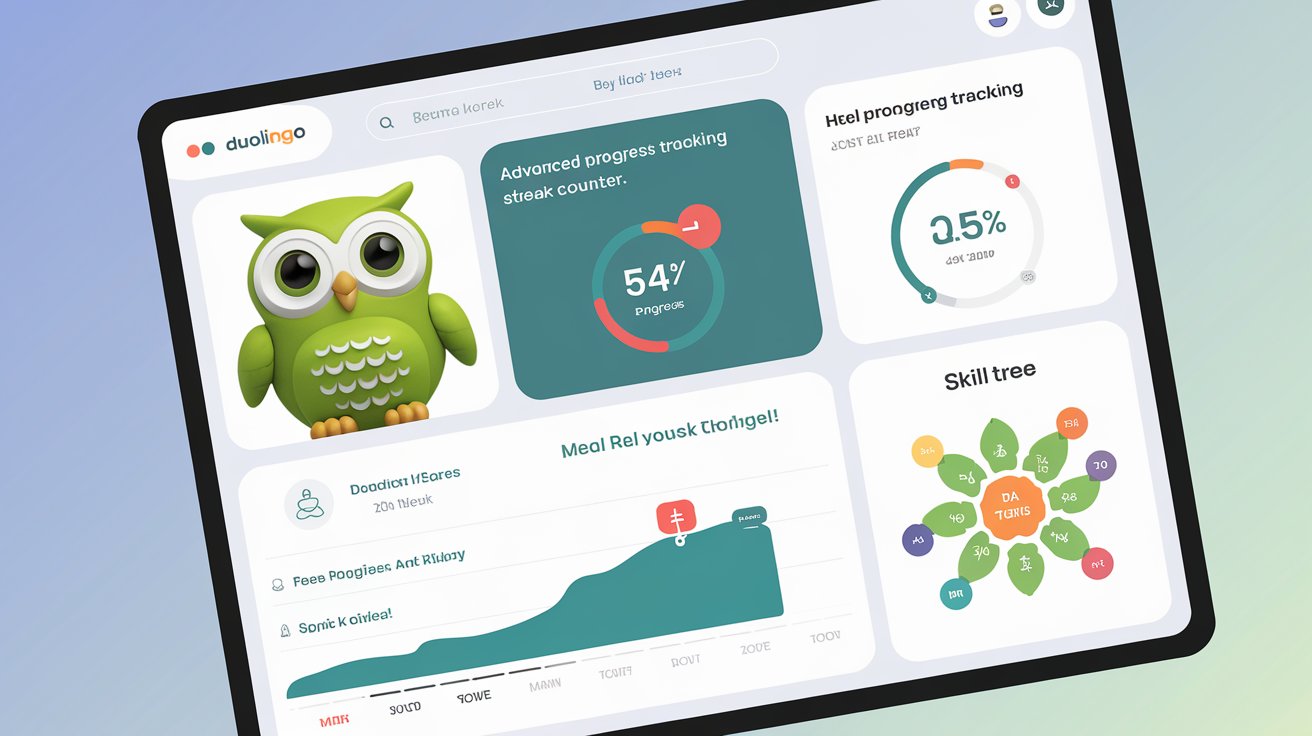
Language Learning with Duolingo becomes more meaningful when implementing sophisticated tracking methods. Create a personal progress journal that records not just completion of lessons, but real-world achievements like understanding song lyrics or participating in conversations.
Document specific grammar concepts mastered, vocabulary acquired, and practical situations where you’ve successfully used the language. This detailed tracking helps identify areas needing attention while providing motivation through visible progress markers. Regular assessment of these metrics helps refine your learning strategy and maintain forward momentum.
Tracking Your Language Journey
Language Learning with Duolingo becomes more effective when you track your progress systematically. While the app offers basic metrics like XP and streaks, true progress measurement goes deeper.
Create a personal progress journal to monitor real-world achievements – like understanding your first podcast or having a natural conversation with a native speaker. Record yourself speaking weekly to track pronunciation improvements, and maintain a vocabulary log for new words encountered outside the app.
This comprehensive tracking helps identify areas needing focus and celebrates meaningful milestones, making your language learning journey more purposeful and rewarding.
Frequently Asked Question
Can you actually become fluent in a language with Duolingo?
Duolingo alone won’t make you fluent, but combined with other resources and practice, it builds strong foundational language skills.
Is Duolingo good for mastering a language?
It’s excellent for basics and intermediate skills, but mastery requires additional real-world practice and immersion techniques.
What is the disadvantage of Duolingo?
Limited advanced conversation practice and cultural context; focuses more on translation than natural speaking abilities.
Can I use Duolingo for free?
Yes, Duolingo’s core features are free. Premium (Plus) offers ad-free experience and additional learning features.
How long should I practice Duolingo daily?
Consistent 15-20 minute daily sessions are more effective than longer, irregular practice periods.
Which language is easiest to learn on Duolingo?
Spanish and French are considered easiest for English speakers due to similar vocabulary and grammar structures.
Is Duolingo Plus/Super worth the money?
Super subscription offers valuable features for serious learners, including offline lessons and mistake practice.
What level does Duolingo get you to?
Most Duolingo courses can get you to an intermediate B1 level with consistent practice.
How many lessons should I do per day?
Complete 2-3 lessons daily for steady progress while maintaining information retention.
Why do I keep losing hearts on Duolingo?
Hearts are lost for mistakes; practice easier lessons or get Super for unlimited hearts.
What happens after finishing all Duolingo lessons?
You can continue practicing, start a new language, or move to advanced resources for further improvement.
Conclusion
Language Learning with Duolingo represents just one piece of the fluency puzzle. Success demands a blend of strategic planning, consistent daily practice, and real-world immersion. By combining Duolingo’s gamified features with external resources like language exchange platforms and cultural immersion activities, learners can develop genuine language proficiency.
The journey isn’t about maintaining perfect streaks or chasing high scores – it’s about making steady, meaningful progress toward practical communication goals. Remember that sustainable learning habits and regular exposure to authentic content play crucial roles in your success. Whether you’re a beginner or advancing toward fluency, let your real-world communication abilities, not just app achievements, guide your learning journey.

Welcome to Brieghtsvision.Com!
Your one-stop place for tips and guides to get the most out of Duolingo. Make learning a new language easier with helpful content for learners of all levels.
